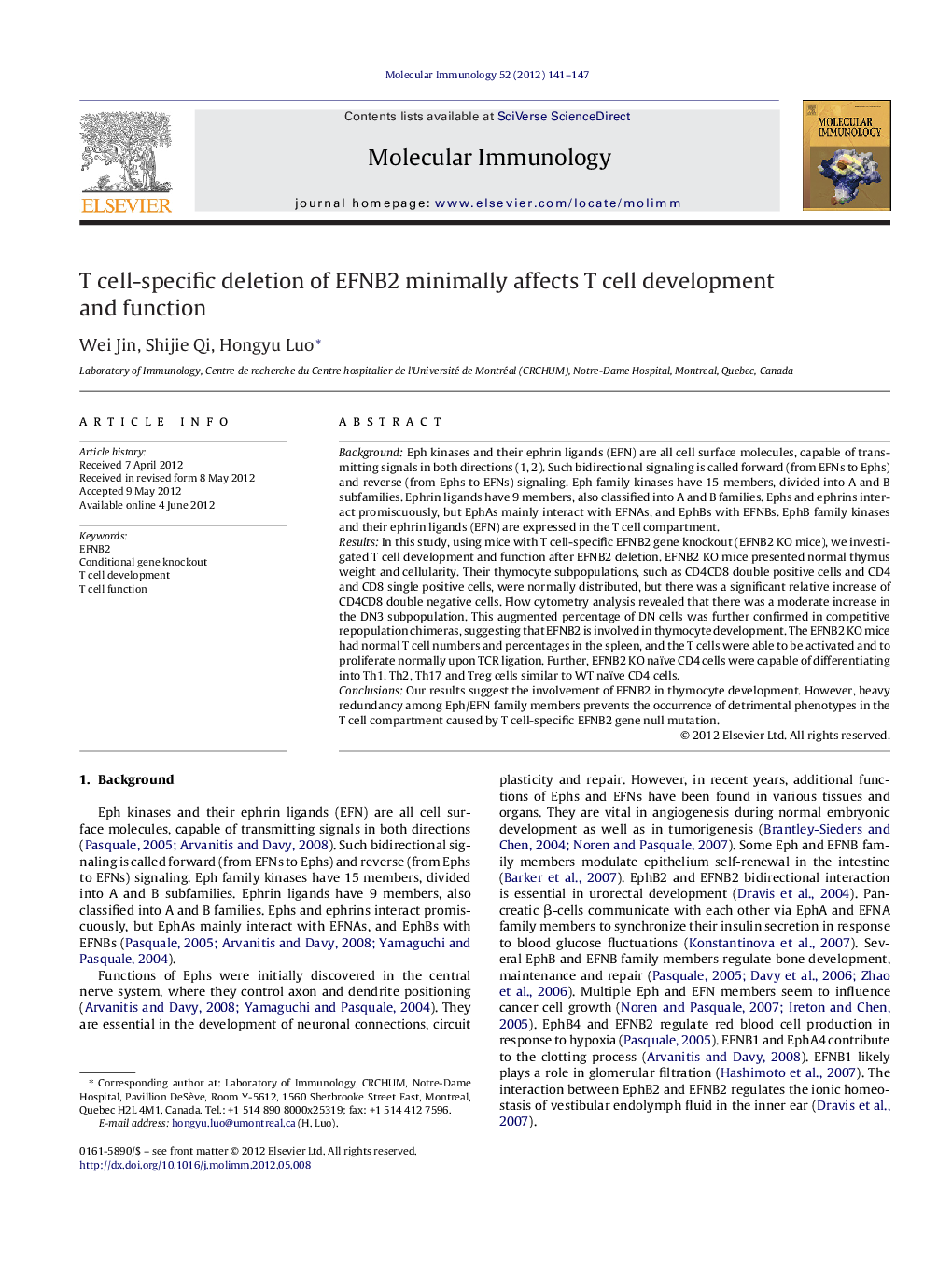| Article ID | Journal | Published Year | Pages | File Type |
|---|---|---|---|---|
| 2830932 | Molecular Immunology | 2012 | 7 Pages |
BackgroundEph kinases and their ephrin ligands (EFN) are all cell surface molecules, capable of transmitting signals in both directions (1, 2). Such bidirectional signaling is called forward (from EFNs to Ephs) and reverse (from Ephs to EFNs) signaling. Eph family kinases have 15 members, divided into A and B subfamilies. Ephrin ligands have 9 members, also classified into A and B families. Ephs and ephrins interact promiscuously, but EphAs mainly interact with EFNAs, and EphBs with EFNBs. EphB family kinases and their ephrin ligands (EFN) are expressed in the T cell compartment.ResultsIn this study, using mice with T cell-specific EFNB2 gene knockout (EFNB2 KO mice), we investigated T cell development and function after EFNB2 deletion. EFNB2 KO mice presented normal thymus weight and cellularity. Their thymocyte subpopulations, such as CD4CD8 double positive cells and CD4 and CD8 single positive cells, were normally distributed, but there was a significant relative increase of CD4CD8 double negative cells. Flow cytometry analysis revealed that there was a moderate increase in the DN3 subpopulation. This augmented percentage of DN cells was further confirmed in competitive repopulation chimeras, suggesting that EFNB2 is involved in thymocyte development. The EFNB2 KO mice had normal T cell numbers and percentages in the spleen, and the T cells were able to be activated and to proliferate normally upon TCR ligation. Further, EFNB2 KO naïve CD4 cells were capable of differentiating into Th1, Th2, Th17 and Treg cells similar to WT naïve CD4 cells.ConclusionsOur results suggest the involvement of EFNB2 in thymocyte development. However, heavy redundancy among Eph/EFN family members prevents the occurrence of detrimental phenotypes in the T cell compartment caused by T cell-specific EFNB2 gene null mutation.
► We generated T cell specific knockout (KO) mice for EFNB2. ► We investigated the T cell development and function after EFNB2 deletion. ► EFNB2 KO mice presented normal lymphoid organs and distribution of lymphocytes sub-populations. ► Flow cytometry analysis revealed a moderate increase in the DN3 subpopulation. ► EFNB2 KO T cells demonstrated normal function. ► Results showed the involvement of EFNB2 in T cell development, but the function may be compensated by other EFNB members.
